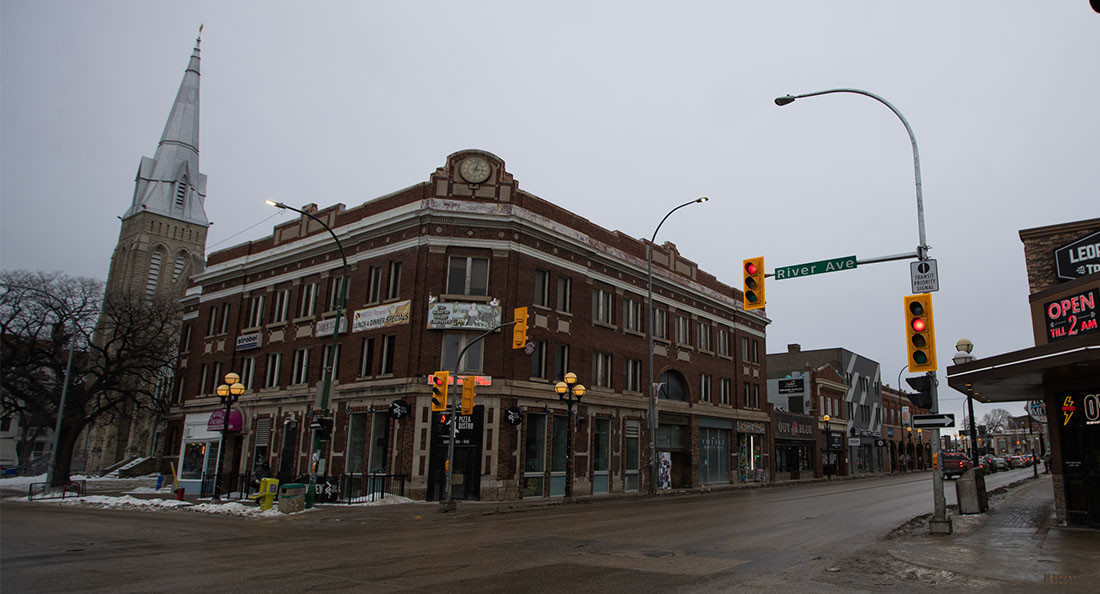How the Village was won
Osborne Village’s illustrious history as haven for arts and culture
Where young people congregate, they will also create. The rule has proven itself many times in many cities over the years.
In New York’s Greenwich Village, Bob Dylan busked in cafés before his ascent to stardom, heralding the burgeoning folk movement. San Francisco’s famed Haight-Ashbury district was the birthplace of a counterculture that swept the nation and made the term “hippie” ubiquitous, even most of a century later.
These havens of bohemian life have been where one can aspire to more than the conformity of quotidian life. During the mid-20th century, more and more creatives and bohemians embraced alternative lifestyles as a means of breaking free of post-war social rigidities. And in any major city centre, creatives will claim one area of their own to make the world of their choosing. Winnipeg is no exception. Enter, Osborne Village.
“It’s just been this hodgepodge of cultural gatherings over the years that have just defined the Village as a very creative part of Winnipeg’s cultural fabric and landscape,” Jino Distasio, a professor of urban geography at the University of Winnipeg, says.
“The Osborne Village area is one of Winnipeg’s most unique, diverse and eclectic neighbourhoods. It’s been that way since the ’70s ... you had the hard-nosed Osborne Village Inn mixed in with alternative, new-wave, hippies, all kinds of things.”
David Moxley, long-time owner of Moxley Rentals in the Village, recalls the early years that garnered its reputation. “Music, sexual liberation, freedom from your parents. It was a very happening kind of thing,” he says.
Through a combination of circumstance, real estate and the indomitable will of residents, Osborne Village became a sanctuary, an enclave of creativity near the heart of Winnipeg for the last half century. Its story is simultaneously simple and complex.
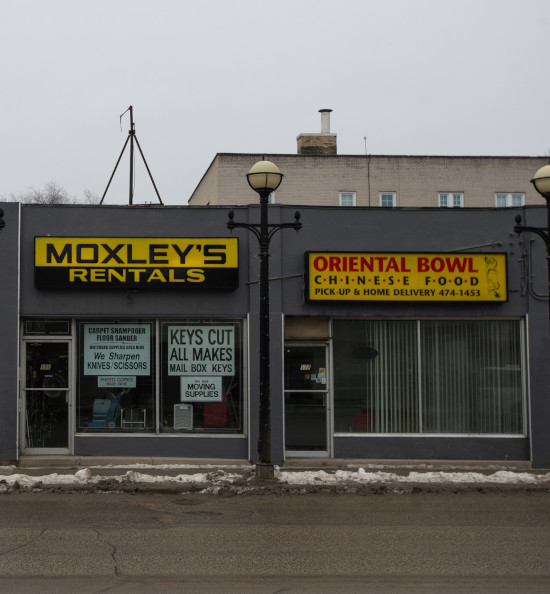
Moxley’s Rentals (181 Osborne St.) and Oriental Bowl (179 Osborne St.)
Location, location, location
Osborne Village, named after the street that runs through its heart, experienced a boom of growth following its incorporation into the City of Winnipeg as a part of the Fort Rouge area in 1882.
Within the next 15 years, the Village would be further connected to the city by the construction of three major bridges: Osborne Street Bridge, Maryland Bridge and Main Street Bridge. This, coupled with Winnipeg’s old streetcar system, cemented the neighbourhood’s future as a bustling commerce district.
“We have to remember that if we go back in Winnipeg’s history, the Osborne Village area itself was very centrally located. It became one of those early neighbourhoods connected to the streetcar system, which gave it an immediate advantage as a streetcar neighbourhood,” Distasio says.
From the beginning of the 20th century onward, the Village’s real estate was dominated by a mix of wealthy homeowners and more middle-class housing, according to Distasio.
“It was one of the first inner-city areas after the development in the 1900s to basically have the people living in this area,” Marc Vachon, an associate professor in the University of Winnipeg’s geography department, says.
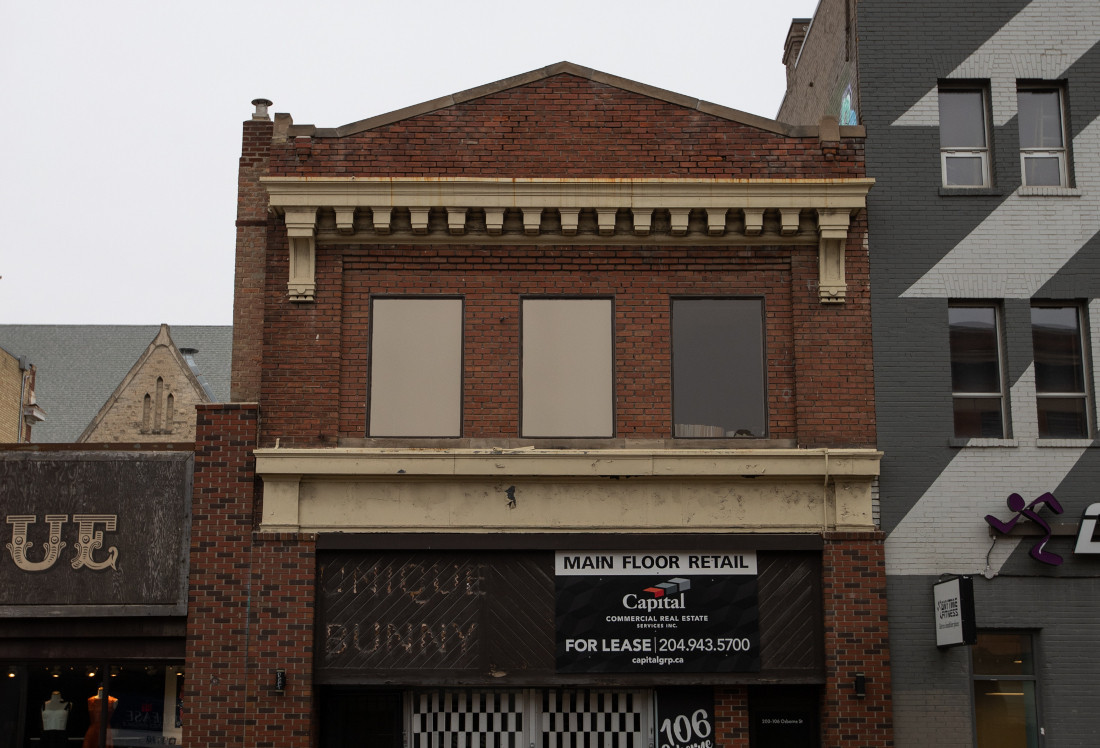
106 Osborne St., a building constructed in 1912, currently sits vacant.
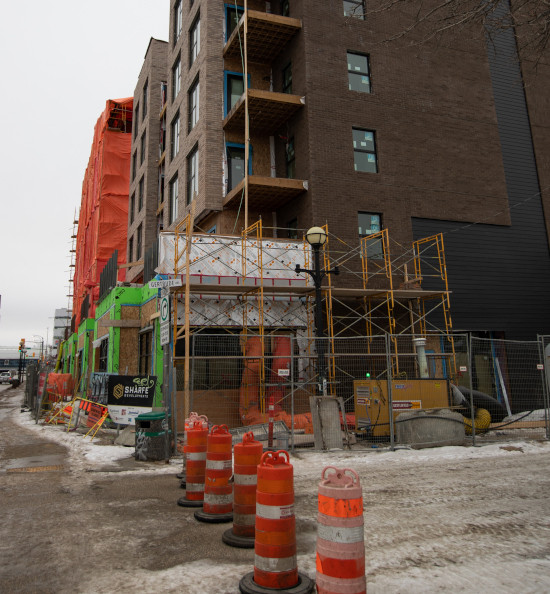
The Zü is a new apartment complex under construction at the site of the former Osborne Village Inn and its music venue, The Zoo.
Letting for less
But in the 1970s, the demographics shifted. Prominent mansions became empty nests as youngsters took flight and the owners grew older. Eventually, it was time for a new sort of inhabitant to take root in the Village: renters.
“It really started around the ’70s and probably continues into the ’80s. Many transformed their homes and started renting rooms,” Vachon says.
He cites the conversion of the building that formerly housed the Victoria General Hospital at 424 River Ave. into an apartment building, where he lived for six years, as an example.
“The ’70s was also the time the city intensified the density by building all these three-storey apartments. Mostly infill and promotion of the construction of these buildings over homes. It was a period of construction of housing,” he says.
Distasio corroborates Vachon’s recollections of real-estate turnover.
“A lot of the homes in the Osborne Village area were transitioning into boarding houses, duplexes, triplexes, rooming houses, fraternity houses ... it’s a trend that we’ve seen
in a number of different neighbourhoods,” Distasio says.
As the area moved away from family dwellings and the idea of counterculture became more commonplace, the arts and culture scene in the Village thrived.
Moxley recalls this period of transition working as a young adult in his father’s shop. At 72 years old, he’s worked at Moxley’s Rentals for over 55 years, a firsthand witness to the Village’s growth after taking over the family business.
“At times, landlords took the opportunity to rent to people who wanted to open up shops for a reasonable price,” Moxley says.
“Stores were opening up and such, and the counterculture was thriving with young teenagers and hippies migrating to areas like this. From the (mid-1960s) up to the ’80s, it was a pretty golden time of youth culture.”
Both Vachon and Distasio cite the proximity of university campuses to the Village as a contributing factor to its status as a happening place.
“If you look at the ’70s and ’80s in the Village, it’s a fact that students really clustered in the Village area, as well. The students that were renting in the area, students that were contributing, students at both universities, as well,” Distasio says.
“You even had a fun clustering of city-planning professors living in the area from the (University of Manitoba). You had
a really interesting mix and match of young professionals and students really contributing to the activism we saw in that neighbourhood, the community mobilization for different things,” he says.
“Osborne has always had less people between (the ages of) 40 and 50 and more people on either extreme, people 20 to 30 and people 50 and up. One of the reasons is access to services like transit and the proximity of the U of W,” Vachon says.
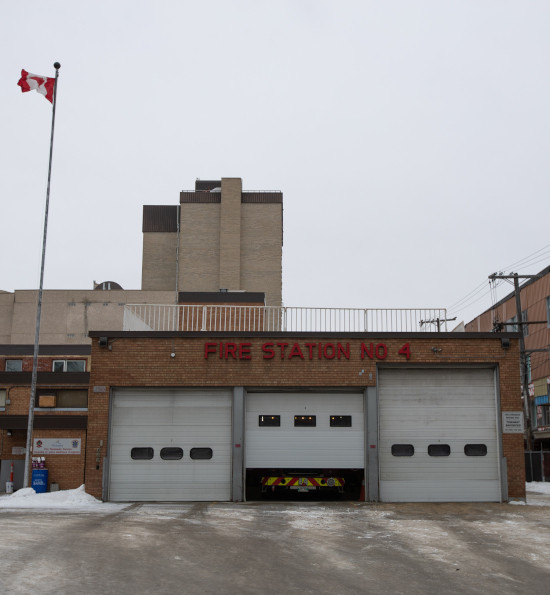
Firehall No. 4 (150 Osborne St.) was constructed in 1955.
Enjoy yourself, it’s later than you think
Of the Village’s many invigorating qualities, one is most noticeable come sunset: shops stay open. For the restless and often nocturnal youth, it has historically encouraged community and congregation long after the suits have turned in for the evening.
“It’s alive, right? As an example, there’s so much in the Exchange, and it is a great area, but it closes up at five o’clock,” Nick Kowalchuk, executive director of the Gas Station Arts Centre (GSAC), says. Leading the GSAC for the last 15 years, he describes it as “a home to people who don’t have a venue.”
“The Exchange is geared towards (offices). I get it, and that’s where they’re making their money. Whereas in Osborne Village, we would go to Baked Expectations, we would go to Papa George’s when it was late at night and absolutely everything was closed. You knew things were going to be open,” he says.
Vachon concurs, citing the vibrant nightlife scene as contributing to both its commercial and creative expansion.
“There’s a lot more dancing bars and clubs open much longer than usual on Osborne. Some restaurants make most of their money between midnight and three o’clock, because that’s when the clubs close and people come to eat,” Vachon says.
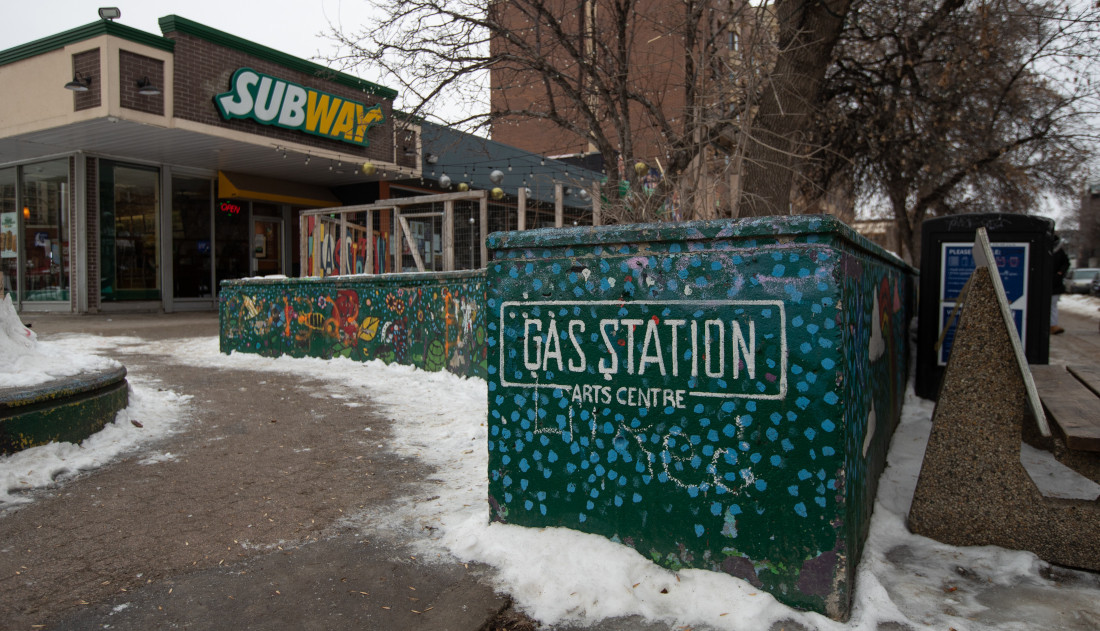
In 2003, Osborne Village residents successfully lobbied against the construction of a Giant Tiger store at the location of the Gas Station Arts Centre.
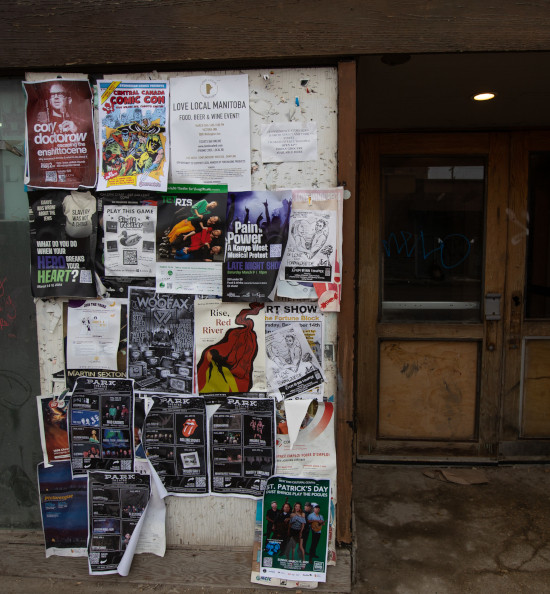
A collage of posters show that, despite changes to the neighbourhood, Osborne Village is still a cultural hub.
It takes a village ...
The rooming houses that spurred its development have mostly disappeared, and the Osborne Village Inn/Zoo has closed and, perhaps symbolically, given way to an apartment complex opening in spring called “The Zü.”
But regardless of changes to real estate or what some may perceive as signals of gentrification, the Village has persisted as a symbol of creativity and bohemia in the city. Why?
Vachon cites the long legacy as making up most of the reputation today but can’t hide his admiration for the place he’s long called home.
“Once a neighbourhood has a reputation, no matter when it starts having it, it sticks for a long time,” he says.
“But I’ve lived in the Village since I’ve lived in Winnipeg ... every day I go out, and I’m sure to meet someone, even though I don’t know their name. I’ll meet someone positive and shoot the breeze and so on. There’s a close-knit kind of community here that people are friendly towards each other.”
Distasio tries to define an ineffable quality of the Village that has kept it trucking on to this day. “The thing that has defined the Osborne Village is its community resiliency, its community activism, its counterculture scene defined by hippies and the early punk scene,” Distasio says.
“There was some kind of spark in the area that kept its foot in this creative world against all these other challenges. The Village was a mix of metal, madness and gentrification that shouldn’t mix, but it did.”
In a watershed moment in its history, the people of Osborne fought the conversion of the GSAC into a Giant Tiger store two decades ago, proving the Village people were a force to be reckoned with.
“They fought the Tiger and kept the culture,” Distasio says.
And for Kowalchuk, above all else, community is key.
“It’s a close-knit community that (tries) to help each other out ... they live in the area, and they’re active, so that part of their living room becomes the coffee shops in which they meet,” he says.
Published in Volume 78, Number 20 of The Uniter (March 7, 2024)

